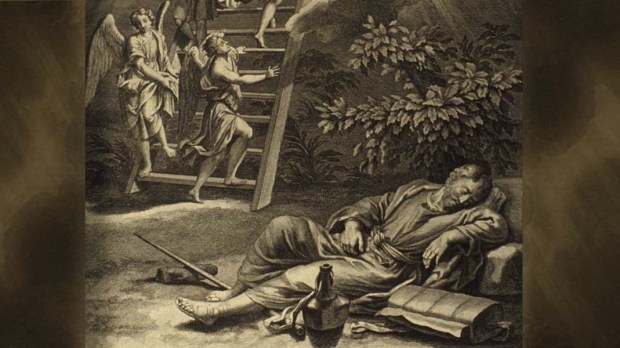The “Benedict Option” has been much discussed lately, but with rather less attention being paid to a fundamental aspect of that option, The Rule of St. Benedict. The Rule, set forth by St. Benedict in the 6th century as a foundation for monastic living, is to be learned and followed by Benedictine monks and nuns, and by Benedictine oblates (lay Benedictines) as well. It is a daily guide for living.
I’m a Benedictine Oblate, and as such, have been a mentor to novices who wish to become oblates, including two who are prison inmates. I correspond with the inmates, going over Chapters of “The Rule,” answering and asking questions. One of these inmates has reversed roles, becoming an example to me of how one should live a life in the Rule, whatever the circumstances.

Read more:
She’s a Tertiary? He’s an Oblate? What Is That About?
Humility is the essential virtue for following the Rule, a virtue that gives one the strength to climb from rung to higher rung on Jacob’s Ladder. So, how does my inmate mentee—call him John—practice this virtue, and how is that virtue embodied in The Rule of St. Benedict? I’ll answer the second question first.
But here, a disclaimer: there are many fine discussions of humility and the Rule, in books and on the internet (see the References, below); I’ll not try to summarize those, but give my own distillation. I won’t list the 12 degrees of humility that St. Benedict used for the rungs of his ladder, but focus on those that were practiced by John and which I am trying to incorporate into my own daily life.
So, then: at the base is the injunction given by Jesus: “Whoever exalts himself will be humbled; but whoever humbles himself will be exalted.” Matt 23:12 (NABRE)
This is the recognition that we are God’s creation, and that like Adam, we are made from the ground. Thus, whatever talents and gifts we have come from God, not by our own doing. This recognition is the “Fear of the Lord” that is the first rung: not being afraid of God, but standing in awe of his creative power.
Another way to phrase “fear of the Lord” is “to be struck in awe.” To bring this awestruck awareness into our lives, we have to do several things:
- Practice submission to authority
- Be patient in difficult situations
- Take self-inventory of our faults and virtues
- Be content with our lot, even though it isn’t what we might wish.
In other words, we must abandon self-will and self-gratification — that lifelong challenge.
You’ll better-appreciate how John climbs Jacob’s Ladder — this Ladder of Humility — if you know a little about him. Picture someone from the rural mid-south, 35 to 50 years old. I don’t know how long he’s been in prison, but it’s been for much more than three or four years — he’s due to get out next year on parole. His family is important to him — parents, elderly grandmother, nephews, nieces, cousins. He converted to Catholicism about three years ago and became a full Benedictine Oblate in November of last year. He is respected by his fellow inmates, acknowledged to be a leader. He is a fine writer, a little rough around the edges, with an impressive, almost authoritative, grasp of Scripture.
In his letters, John has not complained about his lot in prison. He does not tell me that he is ascending in humility; this I infer from his comments about how the Rule applies to his daily routine and from his quotes from Scripture. It is clear from his letters that the state institution in which he is a prisoner is not a cushy establishment like the Federal minimum security installations I have visited as a Extraordinary Minister of Holy Communion and catechist — there are no gyms, no computers, no personal TVs, and only minimal reading material. If he is forced to move because of weather conditions and leave his stuff behind, there’s not a complaint. If a guard harangues him, he receives it as a deserved chastisement. If he doesn’t get a job making belts, but instead works in the laundry, that’s all to the good. His concern is to show by example to the other inmates that Christ is his friend and will be theirs, wherever they are.
When I read John’s letters I think back 12 years when I was a Benedictine novice oblate, studying Chapter 7 of the Rule — “On Humility” — at local Deanery meetings. As I progressed, I considered my past, and how much better my life would have been had I known about Benedictine Spirituality, and followed Benedict’s precepts 10 or 20 years earlier.
Even now, I realize, I fall short — I catch myself being dissatisfied with my work and its effectiveness, or I am impatient and not content with my lot, worried about the state of the country and the world. And I am no prisoner behind vertical bars; for me the steps of the ladder are horizontal and unintruded upon.
So, I go back and read John’s latest letter, and then Chapter 7 of the Rule and resolve: one rung down today, but tomorrow two up. We descend and ascend.
By that descent and ascent we must surely understand nothing else than this, that we descend by self-exaltation and ascend by humility. And the ladder thus set up is our life in the world, which the Lord raises up to heaven, if our heart is humbled. For we call our body and soul the sides of the ladder, and into these sides of our divine vocation and inserted the different steps of humility and discipline we must climb. — Chapter 7, The Holy Rule of St. Benedict
REFERENCES
Truthful Living: Saint Benedict’s Teaching on Humility. Michael Casey, Gracewing Publishing, 2001
Humility—Monastery of the Ascension, Fr. Hugh Feiss, OSB
Humility—Monastery of Christ in the Desert, Abbot Philip Lawrence, OSB
Humility—The Forgotten Virtue, St. Vincent Archabbey

